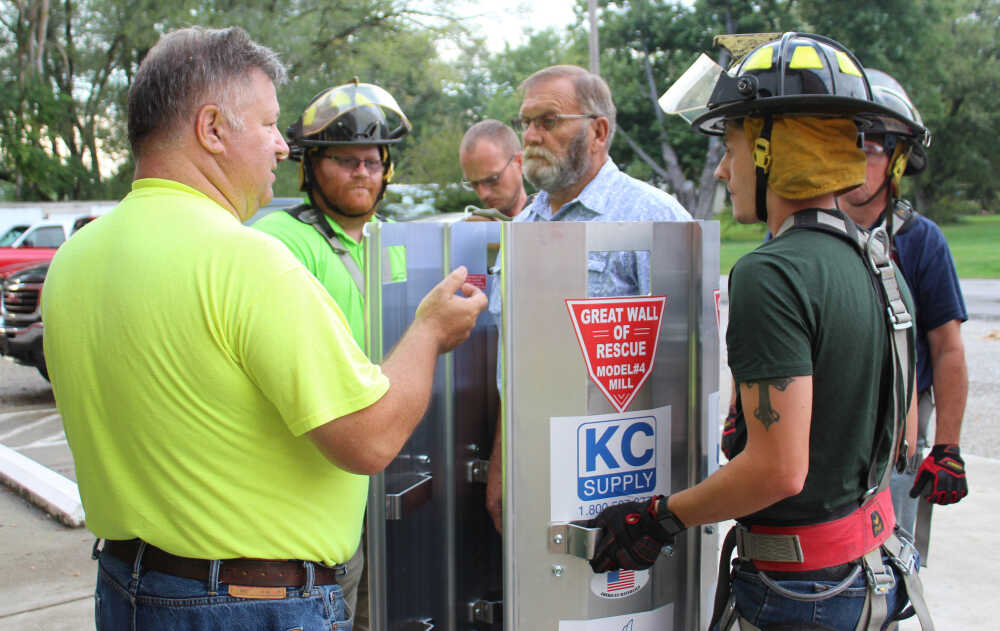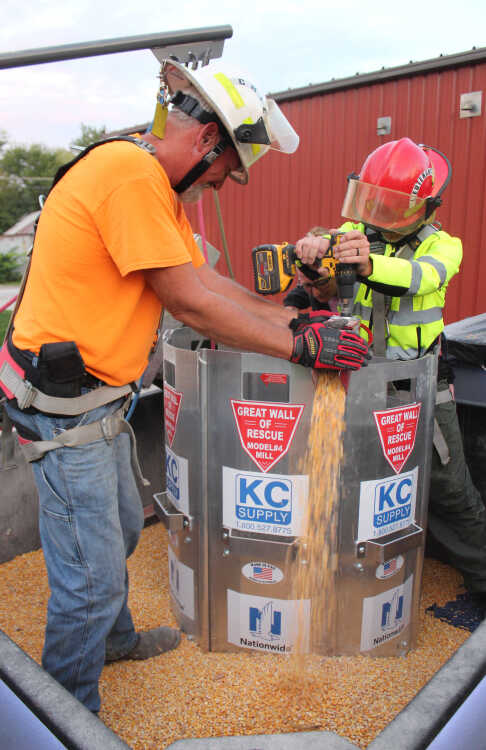Grain bin rescue training held Monday in Fillmore

FILLMORE — As farmers are now in the midst of the hustle and bustle of harvesting and storing grain, volunteer firefighters and EMS personnel were able to participate in grain bin rescue training Monday evening.
Through a partnership with the National Education Center for Agricultural Safety (NECAS) and Nationwide Insurance, the Fillmore Volunteer Fire Department is one of 48 fire rescue agencies in the country awarded grain rescue tubes and hands-on training for such an emergency.
The fire department was one of 1,000 agencies nominated in 2021 under Nationwide’s annual grain bin safety campaign. Since the campaign began in 2014, these resources have been provided to 200 departments in 30 states to date.
The training was led by NECAS Director Dan Neenan, who is also a firefighter and paramedic specialist for two departments near Peosta, Iowa, where the organization is based.
Using a mobile unit which simulates entrapment inside a grain bin, Neenen went over different elements of a rescue.
In a grain bin with an unloading augur running, a person can sink to their waist in 15 seconds and be completely submerged within 30. Then there is the sheer pressure of the compacted grain and it flowing toward the middle. Other situations include crusted grain which cannot support a person’s weight and avalanches inside.
Apart from potential bleeding and swelling, compartment syndrome is the most serious medical factor. This occurs when pressure inside the spaces where organs or muscles are organized becomes dangerously high. As such, blood flow is constricted to these tissues.

Various factors include equipment around the bin, weather conditions, the bin’s construction and livestock. As such, an incident command system (ICS) must include emergency as well as personnel who might manage the property. Information about the victim’s status and the condition of the bin and grain would also be gathered.
The first necessity in a grain bin rescue is “Lock out, tag out.” This means ensuring that power to the unloading auger is completely shut off prior to and during the operation. A charged hose line would also be needed in case the grain catches fire.
If someone is fully immersed, an even number of equidistant V-holes 30 inches wide would be cut to release the grain. However, the cuts’ orientation might be changed if there are buckling stiffeners. If power to the whole property does not have to be shut down, an aeration fan should be turned on to blow oxygen through the grain.
With the mobile unit, the hands-on component focused on what to do with a partial entrapment.
The rescue tubes are placed in a circle around the victim by harnessed and tied-off rescuers standing on platforms such as soda crates. Then grain is either scooped out or drawn out with a drill-powered auger. The victim is then lifted out with rope or a harness and removed.
The average time is three-and-a-half hours from the time a fire department arrives to when a victim is rescued. Purdue University’s Agricultural Safety and Health Program reported that 35 grain entrapments occurred in the United States last year.
